#sound mixing
Text
hey other therians/alterhumans/nonhumans/otherkin out there!
i have a small hobby about making (mostly ambient) playlists and soundscapes to capture the vibes of specific hearthomes. i was curious if folks out there would also like to listen to them for their own species euphoria.
they are constructed of video game music and other ambient tracks.
examples of ones i am currently working on:
- enchanted/haunted forest (with pokemon music)
- wetlands
- island
- desert
- cave
- deep ocean
- hell
im also free to take requests for different biomes/fictional worlds/specific areas of the world/creatures etc. just send in an ask with what you want and i might do it.
Thank you!!!
EDIT: check the reblogs to find the list where all these playlists will be placed!!
235 notes
·
View notes
Photo

https://www.citrona.studio/
#Citrona Studio#design#studio#production#film#sound mixing#portfolio#typography#type#typeface#font#FK Screamer Upright#Work Sans#2023#Week 25#website#web design#inspire#inspiration#happywebdesign
12 notes
·
View notes
Text
#Jurassic Park#90s#1993#Steven Spielberg#Spielberg#director#filmmaker#master#dinosaurs#sci-fi#adventure#blockbuster#movie#sound design#sound mixing#sound#Gray Rydstrom#cinema
7 notes
·
View notes
Text
6 notes
·
View notes
Text
The Enterprise stops a Klingon false flag operation
(Star Trek: Strange New Worlds S02 E01)
#star trek#strange new worlds#star trek strange new worlds#st snw#snwedit#star trek edit#trek edit#video edit#uss enterprise#false flag#klingon#space battle#my edit#my work#sound mixing#video editing#video editor
4 notes
·
View notes
Text
Why there are separate Oscars for sound mixing and sound editing?
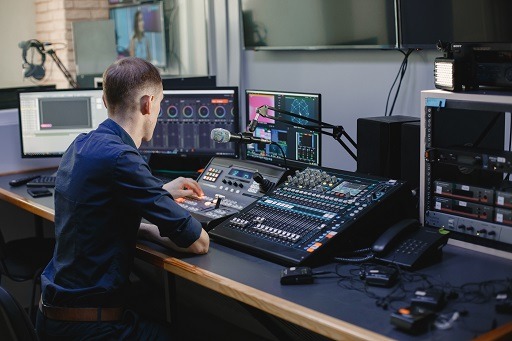
While the glitz and glamour of the Oscars may be associated with the A-list actors and breathtaking visuals, the unsung heroes of the film industry work their magic behind the scenes. Enter the wizards of film sound design, the maestros who manipulate sonic elements to create immersive experiences that transport us into captivating worlds.
At the Academy Awards, two distinct categories honor these audial architects: Sound mixing and sound editing. In this blog post, we’re going to explore why these two categories differ, uncovering the artistry behind each and the vital roles they play in bringing movies to life.
Unraveling the distinction between sound mixing and sound editing
You might think that sound mixing and sound editing are interchangeable terms. But hold on: there’s a lot of difference between them, and we’re going to break it down for you.
Let’s start with sound editing. This is the nitty-gritty, down-and-dirty work of capturing and creating every single sound effect that you hear in a movie. Whether it’s the sound of a car engine revving, a sword being unsheathed, or a monster roaring, sound editors are the ones who make it happen.
Sound editors are like audio detectives, always on the hunt for the perfect sound to match the action on screen. And let’s not forget the fun part of their job: creating brand-new sounds from scratch. Sound editors are like audio wizards, conjuring up bizarre and otherworldly sounds that have never been heard before.
Now, let’s move on to sound mixing. Sound mixers take all the individual sound elements that the sound editors have created and blend them into one harmonious soundscape. Think of them as audio chefs, carefully selecting the right ingredients and spices to create the perfect dish. They adjust the levels, the panning, the EQ, and all sorts of other fancy-sounding stuff to make sure that everything sounds just right.
So, in a nutshell, sound editing is all about creating individual sounds, while sound mixing is about blending them to create one beautiful sonic masterpiece. Both are crucial to film sound design, and both require a unique set of skills and expertise. It’s like comparing apples and oranges. Sure, they’re both fruit, but they’re different in taste, texture, and appearance.
The intricacies of sound editing
Sound editing is like a treasure hunt for the perfect sound effect. Imagine a scene where a character is walking through a forest. The sound editor would have to capture the crunching of leaves underfoot, the rustling of branches, the chirping of birds, and the whisper of the wind. But wait, what if there’s a bear in the distance? The sound editor would have to create the sound of a bear growling, even if they’ve never heard one in real life. It’s like a game of audio charades where the sound editor has to use their imagination and creativity to create the perfect sound.
But it’s not just about capturing or creating the sound effect. The sound editor also has to manipulate and process the sound to fit the scene. They might add some reverb to make it sound like the action is taking place in a large space, or they might EQ the sound to emphasize a specific frequency. It’s like baking a cake: you can have all the right ingredients, but you need to mix them in the right way and bake them at the right temperature to get the perfect result.
And let’s not forget about the fun part of the job: creating new sounds from scratch. Sound editors are like mad scientists, always experimenting with new techniques and tools to create sounds that have never been heard before. They might record their voice and manipulate it to create a monster’s roar or use a watermelon to create the sound of a head being smashed. It’s a job that requires imagination, creativity, and a willingness to think outside the box.
But it’s not all fun and games. Sound editing is a time-consuming and detail-oriented process. A single sound effect can take hours, if not days, to capture, create, and process. And when you’re working on a big-budget blockbuster, the pressure is on to create a sonic landscape that’s both immersive and believable.
The craft of sound mixing
So, what exactly is sound mixing? Well, sound mixers are the maestros of the auditory realm, taking all the different sound elements (dialogue, music, sound effects) and blending them. They’re like the master chefs of audio, creating a delicious auditory feast for our ears.
But it’s not just about throwing all the ingredients into a blender and hitting the mix button. Sound mixers have to delicately balance each sound element, making sure that the dialogue is clear and intelligible, the music swells at just the right moments, and the sound effects pack a punch without overpowering everything else.
Just imagine a scene where our hero is having a heartfelt conversation in the middle of a bustling city street. The sound mixer would have to make sure that the dialogue is front and center, so we can hear every word our hero utters. But they also need to weave in the sounds of car horns, footsteps, and distant conversations to create a realistic urban ambiance. It’s like a juggling act, keeping all the elements in perfect harmony.
And let’s not forget about the spatial aspect of sound mixing. Sound mixers use their audio wizardry to create a sense of space and depth. They can make sounds move from left to right, from front to back, and even make them swirl around your head in a mesmerizing audio dance.
But here’s the real magic of sound mixing: it’s all about the emotions. Sound mixers are master manipulators of feelings. They use their craft to enhance the mood of a scene, whether it’s through the haunting melody of a horror movie, the triumphant swell of a superhero theme, or the tender notes of a romantic ballad. They take us on an emotional rollercoaster ride, tugging at our heartstrings and making us laugh, cry, or jump out of our seats in fear.
Celebrating the differences between sound mixing and sound editing
Now that we’ve explored the intricacies of sound mixing and sound editing, it’s time to appreciate the unique contributions of each discipline. While both categories are vital to film sound design, the Academy Awards recognize their distinctions by honoring them separately.
This division allows for a more nuanced recognition of the specialized skills and creative processes involved in each field. By celebrating both sound mixing and sound editing, the Oscars shine a spotlight on the individuals who dedicate their talents to shaping the sonic landscapes of our favorite films.
Conclusion
Film sound design is a captivating blend of technical expertise and artistic creativity. Sound mixing and sound editing, although different in their objectives, work in perfect harmony to create immersive auditory experiences that transport audiences into the heart of the story.
While sound editing focuses on capturing and crafting individual sound elements, sound mixing blends them to achieve a balanced and cohesive soundscape. For that reason, both disciplines deserve recognition for their unique contributions to the cinematic experience.
So, the next time you sit back in a movie theater or cozy up on your couch for a film night, take a moment to appreciate the artistry of film sound design. Listen closely to the whispers and roars, the subtle nuances and thunderous crescendos.
Behind every sound, there are dedicated sound mixers and sound editors who bring their passion and expertise to create a symphony that enriches our cinematic journeys. The Oscars may have separate categories for sound mixing and sound editing, but together they form an extraordinary partnership that elevates the magic of the movies.
Content source: https://rianhunter.com/sb/why-separate-oscars-for-sound-mixing-sound-editing/
3 notes
·
View notes
Text
Lo-Fi Blow Fly (No Fly Zone) - Title - New Release from THISISGRAEME Music
Revamping the old with a fresh, energetic twist! 🎶 I've been revisiting my early tracks, armed with a deeper understanding of mixing. Excited about the enhancements, especially the #DrumAndBass vibes! Check out my #RemixPlaylist to get a taste of what's
Lo-Fi Blow Fly (No Fly Zone)
Get ready to groove to the rhythm of Lo-Fi Blow Fly (No Fly Zone), my latest musical creation! This instrumental is a remix and upgrade of the original that I initially wrote as a more chilled out lo-fi track.
If you’re a fan of my music, I’d love it if you could help me get more exposure by doing any of the following:
FOLLOW my artist profile on Spotify,…
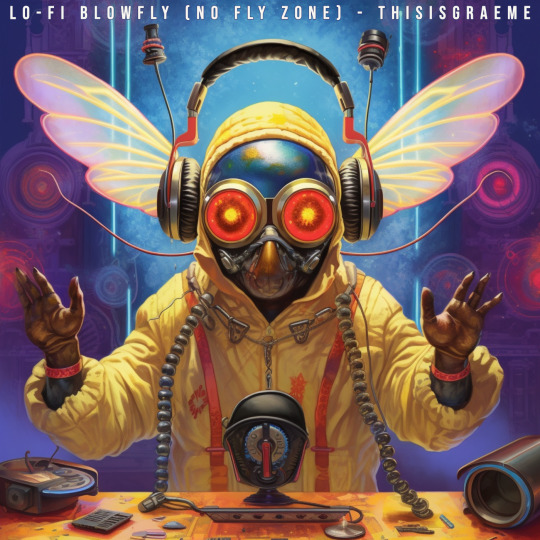
View On WordPress
#Album Teaser#Artist Progress#Audio Engineering#creative process#drum and bass#Music Creation#Music Innovation#Music Learning#music production#Music Remix#Musical Evolution#NEW MUSIC#Reimagined Songs#Song Revamp#Sound Mixing#Studio Work#thisisgraeme#Track Updates
2 notes
·
View notes
Text





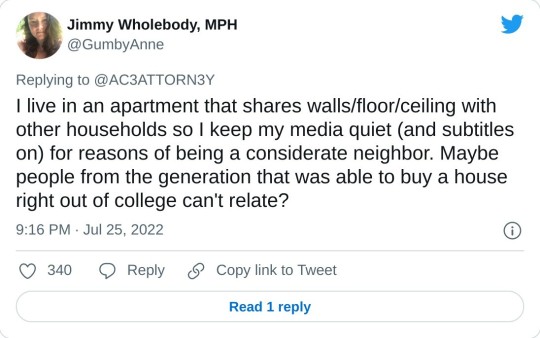
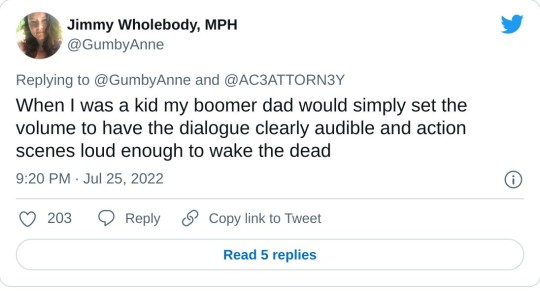
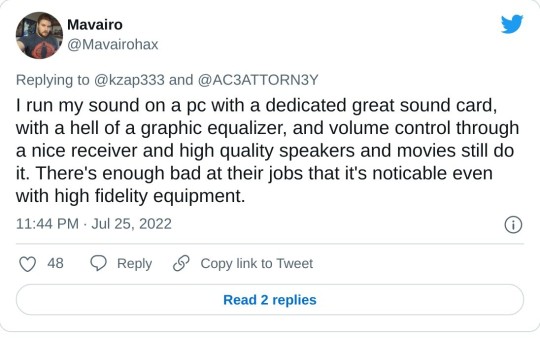


Sources:
https:// twitter.com/JerzSuccubus/status/1551726857959231489
https:// twitter.com/Angelof_Sodom/status/1551735407707992064
#venting#relatable#audio#volume#subtitles#audio mixing#humor#commercials#ads#sound effects#dialogue#sound mixing#sound design#sound
15 notes
·
View notes
Text
Here are the videos I watched about sound recording, in case anyone else is interested too. I had looked for one of those explainer type videos - "this is how hollywood films record and mix sound!" - but all I found were instructional videos.
How to Get Better Cinematic Audio | 4 Crucial Sound Tips
What Setting Up Sound on a Film Set Looks Like
How To Hide A Lav Microphone | Filmmaker's Guide to Wireless Lavalier Microphones
When do you use lavalier mics ? Pro talk at the filmset - part 1
PRO AUDIO & LAV TIPS: The Ones You Probably Didn't Know
How To Be A Boom Operator
Picking The Best Mic For Any Set
This is about Foley sound effects, not on-set recording, but I thought it was cool. The Magic of Making Sound
Apparently I went into a mini hyperfixation on July 26. I didn't realize I watched so many (this isn't even all of them).
Oh wait! I just found some explainer type videos. Apparently I just need to search for sound mixing instead.
‘Ford v Ferrari’ Sound Editors Explain Mixing Sound for Film | Vanity Fair
SFX Secrets: Sound Editing vs Mixing
Audio Design: Sound is 70% of What You See
This gets very technical, but it shows how much sound mixers do (or should do) to process dialogue
How Dialog Should Sound! (Basic Film Audio Design)
How to Be a Sound Mixer | On-Set Audio Masterclass
Behind the Scene with Sound Mixer Chris Howland - Two Days on 'Once Upon a Time in Hollywood'
7 notes
·
View notes
Text
youtube
Despite years of reluctance, I have become another filmgoer who prefers watching movies with the subtitles turned on. In this informative video, we are shown how we went from crisp, clean dialogue to having to personally mix the sound with my TV remote as I watch most modern shows and films.
3 notes
·
View notes
Text
3 notes
·
View notes
Text
Someone with sound mixing skills needs to remix “Are You Satisfied?” by Marina together with “U Can’t Touch This” by MC Hammer (and by extension “Super Freak” by Rick James, if they’re using the bassline from “U Can’t Touch This”)
5 notes
·
View notes
Text
If I have to adjust the volume while watching your movie, you shouldn’t get any awards.
6 notes
·
View notes
Text
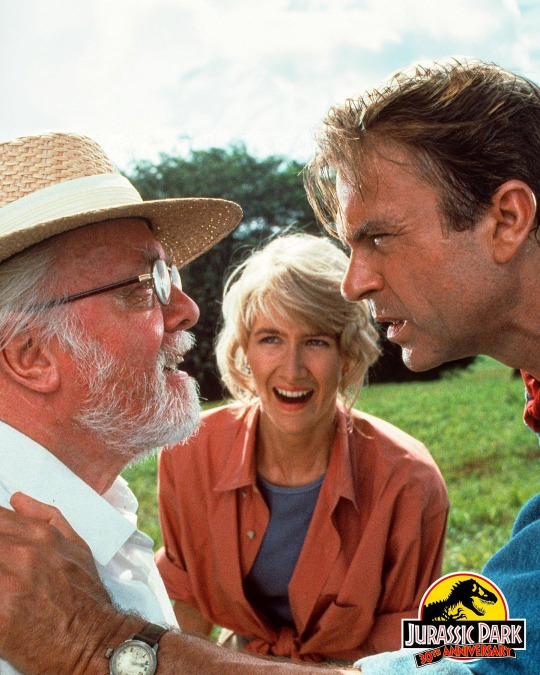
#Jurassic Park#90s#1993#Steven Spielberg#Spielberg#director#filmmaker#master#Michael Crichton#dinosaurs#dinosaur#Tyrannosaurus Rex#T-Rex#Trex#sound#sound design#sound mixing#monster movie#monster#animals#sci-fi#adventure#blockbuster#phenomenal#outstanding#movie#cinema
4 notes
·
View notes
Text
I made an ambient sound mix to go with a playlist I made for studying and I actually really like how it came out.
2 notes
·
View notes
Text
Spring Update 3: Sound and Voice Acting

Most sound effects that I used, or at least the good ones, came from splice.com. They are a paid subscription but they do have a 1 week free trial you can use. Just download a video & audio recording software like OBS and you can record the sounds from the website that way. I would use YouTube for the more popular and specific sounds that everybody has heard before, so a stock wipe transition or the Tickle Belt Theme from Sponge Bob. If you try to only download sounds from YouTube it may take a while to find something that is useful or to find a variety of the same sound that all sound good, such as the punch sound effects.
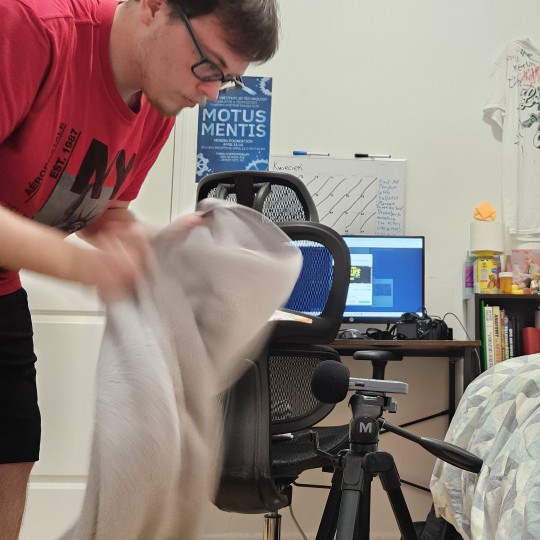
Sometimes it might be worth it to do some foley work yourself. I had the most trouble finding a good cloth sound effect for the blanket and the empty bags. At first, I tried using my actual blanket but it did not give the desired sound I wanted and my bedframe itself is really loud whenever I move. So I experimented with a few other cloth-based materials and finally, I grabbed my towel from the bathroom and it was perfect. It had the right amount of subtleness that I wanted and I could control the length of time I ruffled it. Other places I used foley work was sifting through the popcorn bucket by making my own bag of popcorn and then sifting through that, the crunching sounds of the popcorn were actually me eating Doritos cause crunches from chips are louder than crunches from popcorn, the VHS tapes moving around was me fidgeting with a VHS tape since I had 71 of those laying around and I asked my mom to bring our old VHS player up to Hoboken so I can record any subtle sounds it makes, and then Dillon washing his face was me washing my face with CeraVe Foaming Facial Cleanser.
youtube
The Zoom mics can pick up a lot of background noise, so did my HyperX Solocast, and many of the sounds from YouTube. This video shows a variety of methods you can get rid of background noise in Adobe Audition, highly recommend giving it a watch if this is what is bugging you.
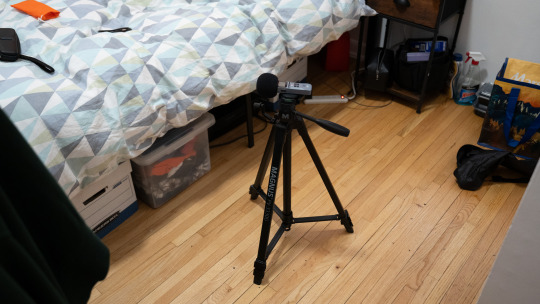


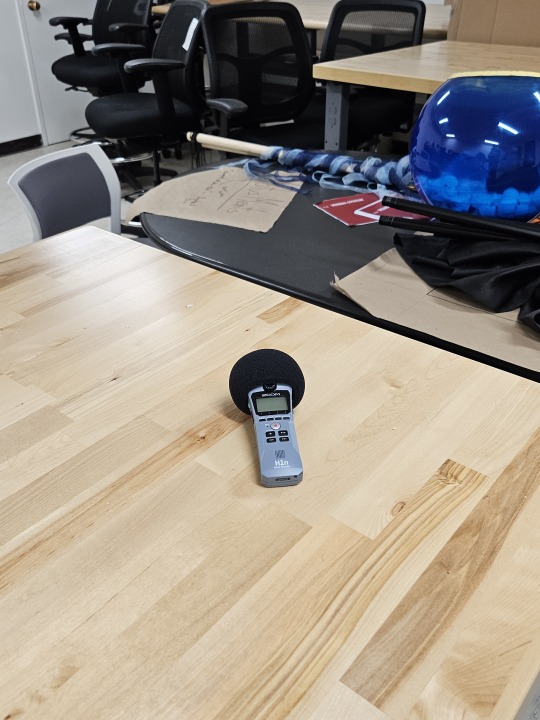
It's also a good idea to record some white noise for your animation, this includes indoor scenes. Usually, when there is absolute silence between pauses when characters are talking it feels awkward or when there are only footsteps and clothes moving. It's also a great way to distinguish different settings from each other. Dillon's room uses the white noise from my own room while the white noise in the brain room is from the bunker. I tried using the same white noise throughout the animation but whenever we transitioned to a different setting it felt like the same place rather than two separate settings.





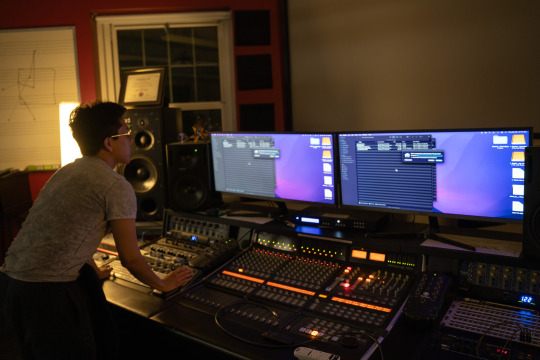

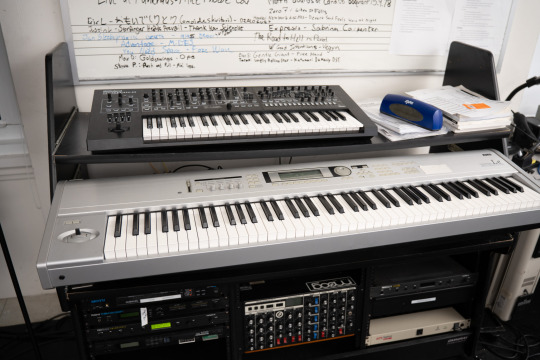



The one thing I severely regret not doing is not taking advantage of some of the Music Tech equipment Stevens has. They have an entire soundproof booth for voice recording in the back left of the studio on the third floor of Kiddie 350 and a bunch of professional microphones and headphones that sound 1000x better than the stuff I was using. I have a Music Tech friend who is also a monitor at the studio and I have known about this since the fall semester. The reason why I didn't do it earlier was because I was just shy about people looking at me trying to voice act. I also didn't know what was the policy about Vis Tech students using the Music Tech stuff but I'm sure if I just emailed some professor about it we could have worked something out, especially since the Music Tech people use equipment from the Fablab all the time. They can also help you out with sound effects as well, I had a tough time trying to find a music cue for the last scene when Dillon closes his eyes. I wanted it to be something like the Smiling Friends ding music cue when they get somebody to smile but I couldn't find it by itself on Youtube. That was until I showed it to my Music Tech friend and he plugged a bunch of things into the keyboard and I got exactly what I needed. However, I only used these good mics for stuff like grunts, snores, and screams. If I used my normal mic it would either peak past the point of it being fixable or it was too quiet and the background noise would always creep in. Also, since I was still unsure of bringing in other actors at this point it's going to be much harder to coordinate a time when all 3 of us, me, my Music Tech friend, and my actor, could be in the studio together at the same time. To keep audio quality consistent I decided it would be best just to use my mic for actual dialogue and the good mic for stuff my mic physically can't perform, also just to make my life easier cause it took a while to get some of these takes. For any future Stevens students that are reading this you 100% know at least one Music Tech major since a lot of them will take the art classes as humanities so it doesn't hurt to reach out to them and ask if they can bring you to the studio, the worst they can say is no.

Instead of the booth, I used the Fablab equipment room for recording the female Vis Tech/Theater Club student voice actor. It's pretty soundproof in there except for a vent that makes a tiny rattle noise but that can easily be taken out if you watch the YouTube video I linked, just record some dead noise as a sample and you'll be fine. However, I had access to this place because I am a Fablab monitor so I can't guarantee that the faculty will let you do what I did. Also, even though I did say this place is soundproof, what I mean by that is that it doesn't echo when you talk into the mic and doesn't pick up a lot of white noise. But the walls are thin so if it's an active day you can hear people from the teacher's offices or the laser cutter room. Also, Fablab people are constantly gonna walk in to get equipment and you'll just be in their way so it's best to go in there outside of their active hours which I highly doubt they would let you do. But again it doesn't hurt to ask.
For the actual voice acting part I'd say, just have fun with it. You obviously don't have the budget to hire one professional voice actor let alone several professional voice actors so the only way to get a good performance is just by experimenting. I have never done any voice performative work or any stage acting. The only actual acting I've done is in my videos and a lot of that acting is pretty much the same character so to play like 6 different characters and trying to make them each distinctive was a big challenge. And if it wasn't obvious from this post I do get very self-conscious whenever I do show my performative pieces. But somewhere in February I just said "Fuck it, I'm never gonna see these people ever again after this is over, I don't care if this is the most cringy shit anybody has ever seen, I need these voice clips for the critique". Once I stopped caring about people judging me the voice-acting part became a lot easier, obviously the first take you get from yourself or from others is not going to be what you want because your job as the director is trying to find that voice. Sometimes that means randomly moaning into the mic from exhaustion because you can't figure out how to sound like a fourth grader and then playing as an anime character cause you thought it was funny but eventually, you'll find it. Also if you get your friends involved try to make it fun for them too cause they are in an unfamiliar situation as well and they are pretty much doing you a favor even if you're paying for their time. This girl that I hired I was under the impression that she didn't like me so even asking her to be a part of my project was a bit nerve-wracking but as I keep saying it won't kill you to just ask and surprisingly she agreed. And then on the day of the recording, I just asked her simple questions like "How has your day been so far?" and then tried to have a mini conversation about that or show some of the funny bloopers from when I was voice acting. I believe it helped loosen us up a bit to each other and the further we got into the session the less awkward I felt. Also, doing all the voices on your own first, even if it's a really shitty voice, can make it significantly easier for your actors to understand what type of performance you want them to go for.
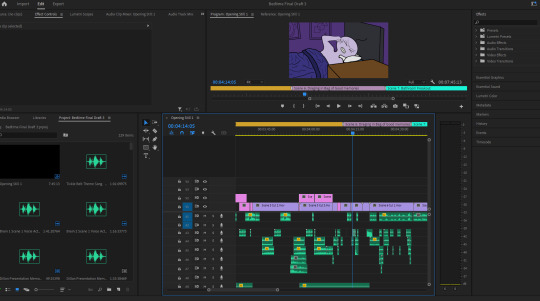
Finally, we move on to the actual sound mixing. Once you clean up all the audio in Adobe Audition you should then port all of those into Premier Pro, including all the takes you don't want. When you splice clips together you never know what take from one actor might work the best with another take from a different actor. With the female actor, I think we did like 5 or 6 takes to get the ending part of the teacher exactly the way I thought would work, and then I ended up using the 2nd or 3rd take because it flowed better when I cut it up a bit and played it back with my performance in context with hers. Other times I would speed up/slow down/reverse or pitch correct certain sound effects I thought were bad at first but then became what I wanted them to be when I did those manipulations. Something I would not recommend doing is leaving all of this stuff last minute, most of the sound mixing I did the day before the Capstone exhibition which drove me insane. I had to constantly replay the same clips and listen to the same sounds and jokes over and over again throughout the day to see if everything was playing well together and then obviously I would have to play everything from the beginning once it was rendered to make sure the sound was consistent throughout the whole animation. You don't want to force your audience to manually turn up and down their headphones as they watch your piece otherwise they won't watch it all the way through. Definitely give yourself a week because the sound in an animated short is just as important as the visuals themselves.
#animation#capstone#study motivation#youtube#voice acting#foley artist#sound mixing#adobe audition#premier pro
0 notes